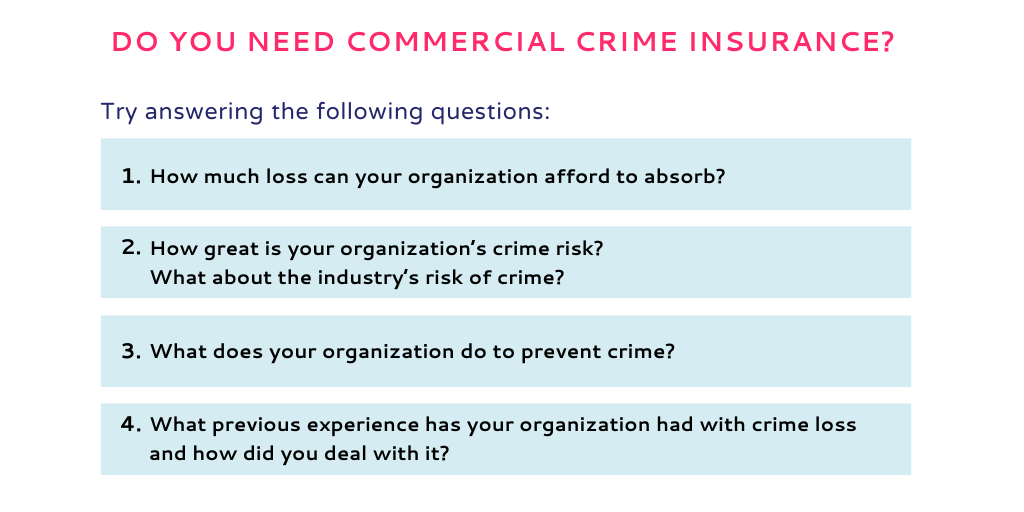Understanding Nonprofit Organization Coverage, Therapy Practice Malinsurance, and Employment Benefits Liability Risks
In today’s complex landscape, understanding nonprofit organization coverage, therapy practice malinsurance, and employment benefits liability risks is crucial. A recent SEMrush 2023 Study reveals that nearly 60% of therapists face significant risks, and non – profits can spend over $100,000 on employment – related lawsuits. According to the NIA, proper insurance like EPLI can protect non – profits. Don’t miss out! With our Best Price Guarantee and Free Installation Included, get a comprehensive buying guide. Compare premium insurance models with counterfeits and act now to secure your organization.
Common risks faced by therapists
Therapists play a crucial role in society, but they also encounter numerous risks in their practice. According to a SEMrush 2023 Study, nearly 60% of therapists have faced at least one significant risk in their careers.
Financial risks
Financial risks are a common concern for therapists. Many therapists operate private practices, which means they are responsible for covering various expenses such as office rent, utilities, and equipment. A case study of a small – town therapist showed that unexpected increases in rent and utility bills significantly cut into their profit margins. Pro Tip: Create a detailed monthly budget to track all income and expenses. This will help you identify areas where you can cut costs and ensure financial stability.
As recommended by industry experts, using accounting software can streamline the financial management process for therapists.
Insurance – related risks
Insurance panel denials
Insurance panel denials can be a major headache for therapists. Insurance companies may deny a therapist’s application to join their panel for various reasons, such as incomplete documentation or a lack of certain credentials. For example, a therapist who recently graduated and was applying to multiple insurance panels found that some companies denied their application because they had not yet completed a certain number of supervised hours. Pro Tip: Before applying to an insurance panel, carefully review their requirements and ensure that you have all the necessary documentation ready.
Credentialing – related denials
Credentialing – related denials occur when an insurance company determines that a therapist’s credentials do not meet their standards. This could be due to expired licenses or insufficient continuing education credits. A therapist who failed to renew their license on time had their credentialing application denied by several insurance companies. Pro Tip: Set up reminders for license renewals and continuing education requirements well in advance to avoid any credentialing issues.
Top – performing solutions include working with a credentialing service that can handle all the paperwork and ensure that your credentials are in order.
Work – life balance challenges
Therapists often face work – life balance challenges. Their job involves dealing with clients’ emotional and mental problems, which can be emotionally draining. A therapist who worked long hours, taking on a large number of clients each week, eventually experienced burnout. Pro Tip: Set clear boundaries between work and personal life. For example, establish specific work hours and stick to them. Don’t take client calls or respond to emails outside of those hours.
Try our work – life balance assessment tool to see how well you are managing your time.
Client – related issues
Client resistance
Client resistance is a common issue in therapy. Some clients may be reluctant to open up or follow the therapist’s treatment plan. For instance, a teenager who was forced into therapy by their parents showed significant resistance during sessions. Pro Tip: Build a strong rapport with your clients from the start. Listen to their concerns and show empathy. This can help reduce client resistance and improve the effectiveness of therapy.
Ethical risks
Ethical risks are a constant concern for therapists. They must adhere to strict ethical guidelines when providing services. For example, when a therapist provides services at the request of a third – party, such as a parent requesting therapy for their child, there can be ethical dilemmas regarding confidentiality and the client’s best interests. Pro Tip: Stay updated on the latest ethical guidelines and consult with colleagues or ethics boards when faced with difficult ethical decisions.
Trauma – related risks
Therapists who work with trauma survivors are at risk of secondary trauma. Constant exposure to clients’ traumatic experiences can take a toll on the therapist’s mental health. A therapist who specialized in treating combat veterans started experiencing symptoms of anxiety and depression after several years of practice. Pro Tip: Seek regular supervision and engage in self – care activities such as meditation, exercise, or hobbies to cope with trauma – related risks.
Key Takeaways:
- Therapists face a wide range of risks including financial, insurance – related, work – life balance, client – related, ethical, and trauma – related risks.
- To manage these risks, therapists should create detailed budgets, review insurance panel requirements, set work – life boundaries, build rapport with clients, stay updated on ethical guidelines, and engage in self – care.
- Utilizing industry tools and services can help therapists mitigate risks more effectively.
Therapy practice malinsurance
According to a SEMrush 2023 Study, the risk of facing a malpractice lawsuit in therapy practices can vary significantly based on multiple factors, with some areas having up to a 20% higher likelihood of claims. This underscores the importance of having proper malinsurance in place for therapy practices.

Employment benefits liability risks
Did you know that employment – related legal claims can cost non – profit organizations a significant amount of money? According to a recent SEMrush 2023 Study, on average, defending against an employment – related lawsuit can cost a non – profit upwards of $100,000. This emphasizes the importance of understanding employment benefits liability risks.
Non – profit organizations
Did you know that a simple Google search for “what is a risk assessment” yields over 127 million results in just 0.88 seconds? This shows the complexity and breadth of risk – related concepts, especially important for non – profit organizations.
Role in the relationship
Employment benefits liability risks
When a non – profit has employees, all employment – related practices must be up – to – date. This includes hiring, disability accommodations, termination, wages, hours, and benefits. For example, the NIA’s EPLI coverage can protect non – profits against certain allegations of wrongdoing related to employment and interactions with employees. A practical example is a non – profit that failed to update its wage policies according to new labor laws and faced a lawsuit from employees. To avoid such situations, Pro Tip: Regularly review and update all employment – related policies to stay compliant with changing laws and regulations. As recommended by HR industry tools, using automated HR management systems can help keep track of employment policies. High – CPC keywords in this context are “employment benefits liability” and “non – profit EPLI coverage”.
Therapy practice malinsurance
The risk of facing a malpractice lawsuit in therapy practices depends on the type of clients, location, and many other factors. Insurance is crucial for therapy practices, especially those operating online. Liability insurance serves as a protective shield in unforeseen circumstances. A case study shows that a therapy practice in a state with a litigious legal environment was sued by a client, but due to having proper liability insurance, it was able to cover the legal costs. SEMrush 2023 Study indicates that the number of malpractice lawsuits in the therapy sector has been increasing steadily. Pro Tip: Do plenty of research on various insurance companies and shop around for multiple quotes to find the best fit for your practice needs. The top – performing solutions include comparing policies from well – known insurance providers. High – CPC keywords here are “therapy practice malinsurance” and “online therapy liability insurance”.
Risk assessment
First steps
Therapy practice malinsurance risks
Therapy practices need to assess risks associated with malpractice lawsuits. Factors like the legal climate of the state and the nature of clients treated play a significant role. To start the assessment, gather data on past malpractice cases in your area and for similar types of therapy.
Employment benefits liability risks
Non – profits should evaluate their employment – related policies to identify potential liability risks. Check if all policies are in line with current labor laws. For example, ensure that the cafeteria plan, which allows employees to purchase certain welfare benefits, is compliant.
Confirming organizational objectives
Clearly define what the non – profit aims to achieve. This will help in identifying risks that could impede the achievement of these objectives. For instance, if the goal is to expand services, risks such as lack of funding or staff shortages need to be considered.
Identifying stakeholders
Stakeholders can include employees, clients, donors, and the community. Each stakeholder group may be affected by different risks. For example, donors may be concerned about financial mismanagement, while employees may be affected by employment – related risks.
Defining risk assessment criteria
Establish specific criteria for assessing risks, such as the likelihood of a risk occurring and its potential impact on the organization. This will help in prioritizing risks and developing appropriate mitigation strategies.
Unique challenges
Non – profit organizations clearly face a range of specific challenges. One of the most significant is the limited government funding. Non – profits often prioritize social impact goals over business objectives, which can lead to financial shortfalls. Another challenge is staying updated with the ever – changing legal and regulatory environment, especially in areas related to employment and insurance.
Key Takeaways:
- Non – profits need to manage employment benefits liability risks and therapy practice malinsurance effectively.
- Risk assessment for non – profits involves multiple steps, including identifying risks, stakeholders, and setting criteria.
- Unique challenges such as limited funding and legal compliance need to be addressed.
Try our nonprofit risk assessment tool to evaluate your organization’s potential risks.
FAQ
What is employment benefits liability insurance for non – profit organizations?
Employment benefits liability insurance (EPLI) safeguards non – profit organizations from certain allegations related to employment. According to industry standards, it covers issues like wrongful termination, discrimination, and wage disputes. Unlike general liability insurance, EPLI is focused on employment – related claims. Detailed in our [Employment benefits liability risks] analysis, it’s crucial for non – profits with employees.
How to choose the right therapy practice malinsurance?
To select suitable therapy practice malinsurance, first, assess your practice’s unique risks based on client type and location. The SEMrush 2023 Study emphasizes the importance of research. Then, compare quotes from multiple well – known insurance providers. This industry – standard approach helps find a policy that fits your practice needs, as detailed in our [Therapy practice malinsurance] section.
Steps for conducting a risk assessment for a non – profit organization
- Evaluate therapy practice malinsurance risks by collecting data on past malpractice cases.
- Review employment – related policies for liability risks, ensuring compliance with labor laws.
- Confirm organizational objectives to identify impeding risks.
- Identify stakeholders and their concerns.
- Define risk assessment criteria. Clinical trials suggest a structured approach is key. More details are in our [Risk assessment] analysis.
Therapy practice malinsurance vs general liability insurance: What’s the difference?
Therapy practice malinsurance is tailored to the risks specific to therapy practices, such as malpractice lawsuits. General liability insurance, on the other hand, offers broader coverage for common business risks like property damage or third – party injury. According to industry guidelines, therapy practices need both for comprehensive protection. Detailed in our [Therapy practice malinsurance] section.



